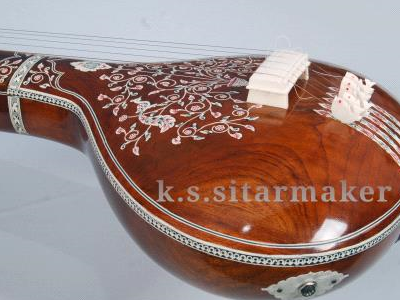

The video below has to do with vibrations, frequencies, and resonance.

Therefore, the pitches that are pleasing to hear are those that are consonant, and it is these pitches that are traditionally used for music by all cultures. The way our minds make sense of music is by being aware of the tonic and understanding the other notes in relation to it. The tonic is played constantly in the background in musical cultures that use a drone (or something like the tanpura in Indian music), but even when it is not physically played, it is present in our minds as we listen to music. At other frequencies, the sound is dissonant (clashes with the tonic). These are frequencies at which the sound produced is clear and pleasing because it is consonant (i.e., in agreement) with the tonic. Musical notes correspond to certain frequencies (pitches) relative to the tonic (sa).
#Tanpura b flat mp3 free
For the sake of efficiency, the video has been set at a brisk pace, but feel free to adjust its speed by clicking the settings button. Once again, C is the tonic (sa) and I have color-coded the natural notes red, the flat notes pink, and the sharp note maroon. The video below demonstrates the ten parent scales. Variations arise due to the different variants (natural, flat, or sharp) used. Unlike ragas, which are more flexible in the number of notes they can include, parent scales are always heptatonic and must include one each of the seven notes ( swara) - sa, re, ga, ma, pa, dha and ni. One system is to classify them under ten parent scales, known as " thaat." These are similar to modes in ancient Greek music. These are called ragas, and we know of about 500 ragas in the Indian classical tradition. Since melody is so central to Indian music, we are always on the lookout for pitch combinations (scales) that offer significant melodic potential. But for creating music, you usually choose specific pitches from among those twelve pitches to give yourself a theme. (Please see how our terms and conditions apply to our exclusive Your Accompanist free-to-download resources).So, there are a total of twelve pitches in an octave. The Tanpura (called 'tamboura' or 'tambura' in South India) is the instrument that provides the characteristic drone background in most Indian Classical Music The tambura is the drone instrument which keeps the sruti Eleanor Rigby Low string/course: G (drone) Violins, accordions, etc. If you enjoy using these scales, please tell us

To download, right-click on 'Download MP3' and select 'Save File As.', 'Save Link As.' or similar. Practice singing them smoothly (legato) or make each note detached (staccato). Take fewer breaths as your control increases, until you can do the whole exercise in one breath. Many people like to use vowel sounds on their own or single syllables like lah, loo, maw, me, (give pew a try!).īreathe comfortably to begin with - and take a breath wherever you have to. the tanpura in Indian music), but even when it is not physically played.
#Tanpura b flat mp3 how to
There is no hard and fast rule about how to use them. Five of these notes have flat/sharp variants, so there are a total of 12 notes. They will help you to sing in tune until you feel confident enough to sing your scales on your own. Michael has created each one individually with its own harmonisation so that you can have a context for singing in Here are some scales which we hope will help you practice. Singing scales can be dull and quite difficult without an accompanist. Jhaptal - 10 beats Kaherwa - 8 beats Matta - 9 beats Pancham Sawari - 15 beats Rudra - 11 beats Rupak - 7 beats Tintal - 16 beats Taal List in Premium Version: Ada Chautal - 14.


 0 kommentar(er)
0 kommentar(er)
